Rising damp is a problem that only started in the 1970s when it became popular to waterproof walls with cement and modern waterproof paints. Rising damp wasn’t a problem when breathable walls and coatings were the norm.
When high exterior ground levels and impermeable materials outside made water come up your wall the accepted solution was to remove the plaster and tank the inside of the wall with cement and waterproof plaster. That can never work as it doesn’t fix the water problem.
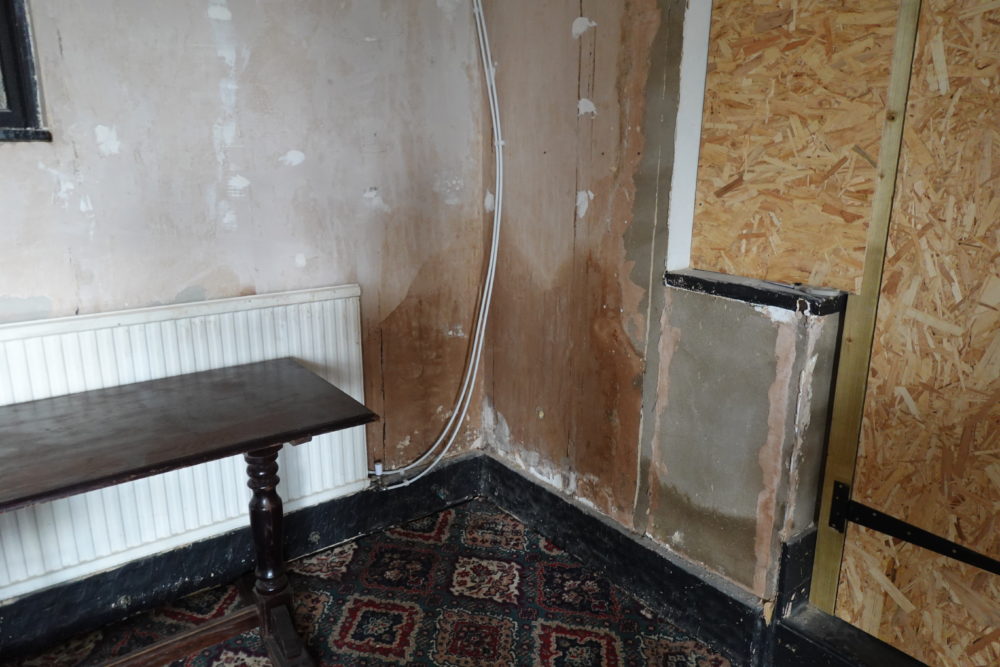
My ground floor was built on two levels. I dug a hole in the higher level floor behind the wall and the soil was not wet. There is only a small amount of water to deal with. The problem is the cement and gypsum plaster (and the waterproof paints) inside don’t allow that water to get out.
I’m planning to fix the damp problem by removing the cement and gypsum from the bottom of the wall and replace them with lime. Exactly the opposite of tanking. I’ve chipped away the cement to the point where the steel mesh hasn’t rusted away.
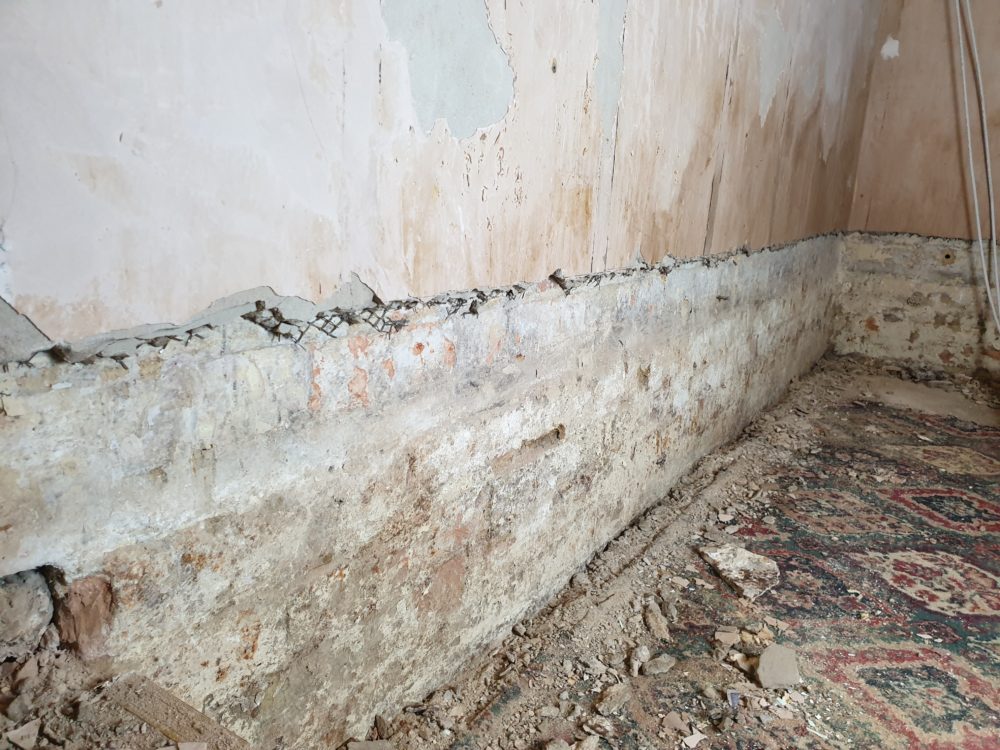
I never seem to get anything done on the house in the winter so I’m getting on with it again the following March. I’ve used a lime render for the base coat made from sharp sand mixed with plastering sand which comes to about 6mm below the finished surface.
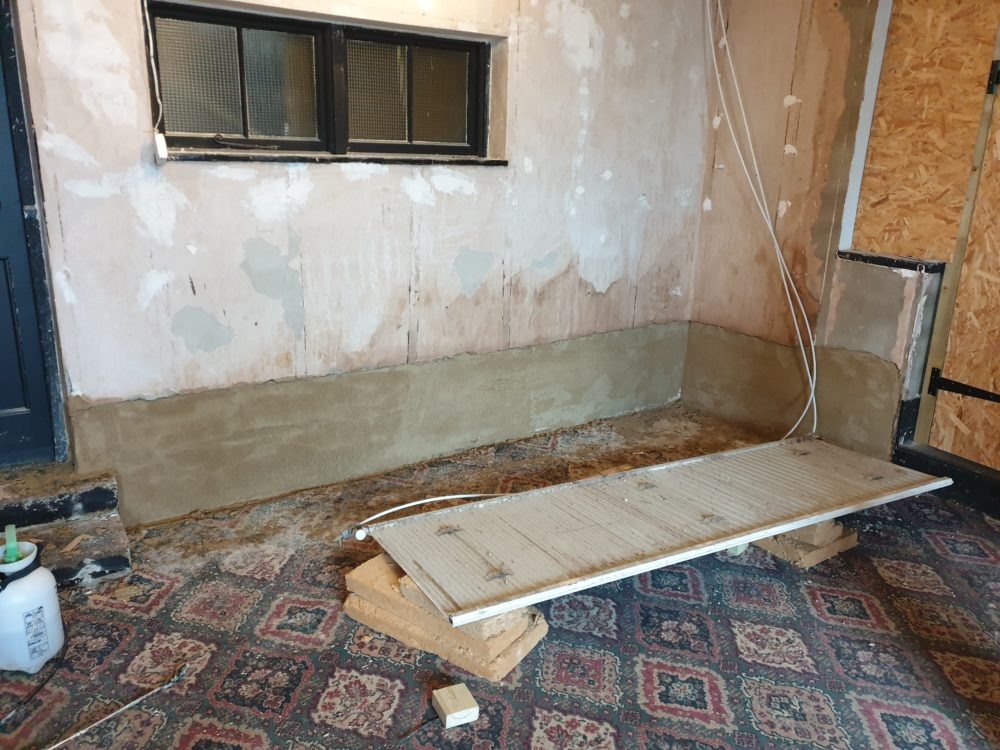
I’m using St Astier Ecomortar R50 for the top coat of plaster as it can be used on top of concrete and gypsum plaster.
There is still a little filler needed especially where the lime plaster meets the existing plaster. The sand size in the lime plaster makes it difficult to get a smooth transition.
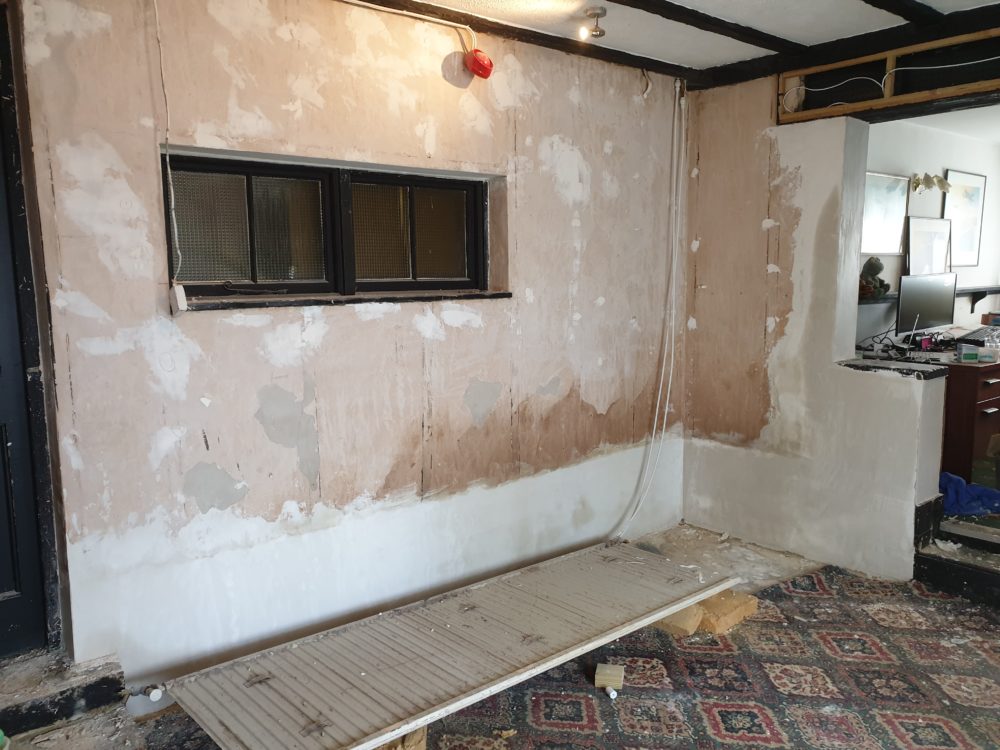
I ended up going halfway around the room. This is my cubby under the stairs which was once part of a lean-to and was presumably somewhere to put a couple of beer barrels.
I’m surprised how well the rounded corners turned out. An advantage of lime plaster is it can be worked when it’s nearly dry which makes this sort of thing easier.
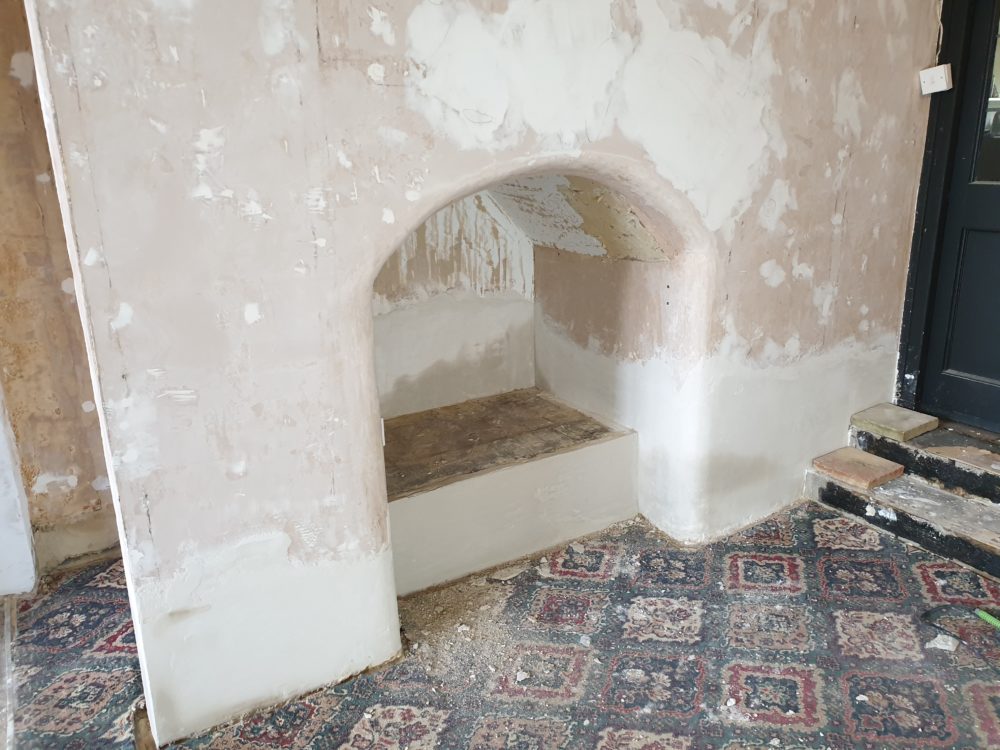
I think I’ve figured out where the water was coming from. There is an inspection chamber that used to back up due to tree roots blocking the foul drain. I fixed that and things have been good for a few years. I’m suspecting the tree has found another way in.
On the plus side I found that shellac is good for blocking stains from the plaster that had been damp but shouldn’t be damp any more as any water can get out of the new lime plaster.